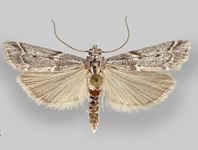Abstract
Bufonidae is a cosmopolite and speciose clade that is currently hypothesized to have originated in Gondwana around 78–99 Ma (Pramuk et al. 2008). The systematics of the family was assessed using morphological and molecular data, alone or in a total evidence analysis (Pramuk 2006; Pramuk et al. 2008; Bocxlaer et al. 2010; Pyron & Wiens 2011). Due to taxonomic changes, most of the South American species of Bufo Garsault were relocated to the genus Rhinella Fitzinger, currently the second most speciose genus with 92 scientifically named and valid species (Frost 2020). The species in the genus are arranged in six taxonomic groups (crucifer, granulosa, margaritifera, marina, spinulosa, veraguensis species groups [Frost 2020]); the Rhinella marina group is characterized by specimens with well-ossified and exostosed skull, ornamented with deep striations, pits, and rugosities (Maciel et al. 2010). The Rhinella marina group includes eleven living species, distributed in two main clades named after their geographical distribution: the north-central clade and south-central clade. The south-central clade bears the species: R. achavali (Maneyro, Arrieta & de Sá), R. arenarum (Hensel), R. icterica (Spix), and R. rubescens (Lutz). The north-central clade bears the species: R. cerradensis Maciel, Brandão, Campos & Sebben, R. horribilis (Wiegmann), R. jimi (Stevaux), R. marina (Linnaeus), R. poeppigii (Tschudi), R. schneideri (Werner), and R. veredas (Brandão, Maciel & Sebben).
References
Araújo-Júnior, H.I. & Moura, G.J.B. (2014) Anuros (Amphibia, Anura) do Pleistoceno Final-Holoceno Inicial de Itapipoca, estado do Ceará, Brasil: taxonomia, paleoecologia e tafonomia. Revista Brasileira de Paleontologia, 17 (3), 373–388.
https://doi.org/10.4072/rbp.2014.3.08
Araújo-Júnior, H.I., Porpino, K.O., Bergqvist, L.P. & Dardon, U. (2016) New fossil record of Bufonidae (Amphibia, Anura) in the Late Pleistocene-Early Holocene of northeastern Brazil and its paleoenvironmental significance. Journal of Sedimentary Environments, 1 (1), 68–77.
https://doi.org/10.12957/jse.2016.21507
Báez, A.M. & Nicoli, L. (2004) Bufonid toads from the Late Oligocene beds of Salla, Bolivia. Journal of Vertebrate Paleontology, 24 (1), 73–79.
https://doi.org/10.1671/1900-6
Bocxlaer, I., Loader, S.P., Roelants, K., Biju, S.D., Menegon, M. & Bossuyt, F. (2010) Gradual adaptation toward a range-expansion phenotype initiated the global radiation of toads. Science, 327 (5966), 679–682.
https://doi.org/10.1126/science.1181707
Cruz, L.E., Fernicola, J.C. & Carignano, C.A. (2017) New Vertebrates of the Brochero Formation (Córdoba, Argentina): A Review of the Pliocene of Central Argentina. Journal of Mammalian Evolution, 25 (3), 315–326.
https://doi.org/10.1007/s10914-017-9390-0
Estes, R. & Wassersug, R.J. (1963) A Miocene toad from Colombia, South America. Breviora, 193, 1–13.
Frost, D.R. (2020) Amphibian Species of the World: An Online Reference. Version 6.1 (05). Available from: https://amphibiansoftheworld.amnh.org/index.php (accessed 2 February 2020)
https://doi.org/10.5531/db.vz.0001
Goloboff, P.A., Farris, J.S. & Nixon, K.C. (2008) TNT, a free program for phylogenetic analysis. Cladistics, 24 (5), 774–786.
https://doi.org/10.1111/j.1096-0031.2008.00217.x
Maciel, N.M., Collevatti, R.G., Colli, G.R. & Schwartz, E.F. (2010) Late Miocene diversification and phylogenetic relationships of the huge toads in the Rhinella marina (Linnaeus, 1758) species group (Anura: Bufonidae). Molecular Phylogenetics and Evolution, 57 (2), 787–797.
https://doi.org/10.1016/j.ympev.2010.08.025
Marshall, L.G. & Sempere, T. (1991) The Eocene to Pleistocene vertebrates of Bolivia and their stratigraphic context: a review. In: Suarez-Soruco, R. (Ed.), Fosiles y facies de Bolivia, Revista Técnica de YPFB, 12 (3–4), pp. 631–652.
Pérez-Ben, C.M., Gómez, R.O. & Báez, A.M. (2014) Intraspecific morphological variation and its implications in the taxonomic status of ‘Bufo pisanoi,’a Pliocene anuran from eastern Argentina. Journal of Vertebrate Paleontology, 34 (4), 767–773.
https://doi.org/10.1080/02724634.2014.839452
Pérez-Ben, C.M., Gómez, R.O. & Báez, A.M. (2019a) A new Pliocene true toad (Anura: Bufonidae): first record of an extinct species from South America. Journal of Vertebrate Paleontology, 39 (1), e1576183. https://doi.org/10.1080/02724634.2019.1576183
Pérez-Ben, C.M., Turazzini, G.F. & Gómez, R.O. (2019b) A Last Glacial anuran assemblage from the inland Pampas of South America provides insights into climate and environments during Marine Isotope Stage 3. Journal of Vertebrate Paleontology, 39 (3), e1627365.
https://doi.org/10.1080/02724634.2019.1627365
Pramuk, J.B. (2006) Phylogeny of South American Bufo (Anura: Bufonidae) inferred from combined evidence. Zoological Journal of the Linnean Society, 146(3), 407–452.
https://doi.org/10.1111/j.1096-3642.2006.00212.x
Pramuk, J.B., Robertson, T., Sites, J.W.J. & Noonan, B.P. (2008) Around the world in 10 million years: biogeography of the nearly cosmopolitan true toads (Anura: Bufonidae). Global Ecology and Biogeography, 17 (1), 72–83.
https://doi.org/10.1111/j.1466-8238.2007.00348.x
Pyron, R.A. & Wiens, J.J. (2011) A large-scale phylogeny of Amphibia including over 2800 species, and a revised classification of extant frogs, salamanders, and caecilians. Molecular Phylogenetics and Evolution, 61 (2), 543–583.
https://doi.org/10.1016/j.ympev.2011.06.012
Schindelin, J., Arganda-Carreras, I. & Frise, E., Kaynig, V., Longair, M., Pietzsch, T., Preibisch, S., Rueden, C., Saalfeld, S., Schmid, B., Tinevez, J.Y., White, D.J., Hartenstein, V., Eliceiri, K., Tomancak, P. & Cardona, A. (2012) Fiji: an open-source platform for biological-image analysis. Nature Methods, 9 (7), 676–682. [PMID 22743772]
https://doi.org/10.1038/nmeth.2019
Tomassini, R.L. & Montalvo, C.I. (2013) Taphonomic modes on fluvial deposits of the Monte Hermoso Formation (Early Pliocene), Buenos Aires province, Argentina. Palaeogeography, Palaeoclimatology, Palaeoecology, 369, 282–294.
https://doi.org/10.1016/j.palaeo.2012.10.035
Tomassini, R.L., Montalvo, C.I., Deschamps, C.M. & Manera, T. (2013) Biostratigraphy and biochronology of the Monte Hermoso Formation (Early Pliocene) at its type locality, Buenos Aires Province, Argentina. Journal of South American Earth Sciences, 48, 31–42.
https://doi.org/10.1016/j.jsames.2013.08.002.
Vallinoto, M., Sequeira, F., Sodré, D., Bernardi, J.A., Sampaio, I. & Schneider, H. (2010) Phylogeny and biogeography of the Rhinella marina species complex (Amphibia, Bufonidae) revisited: implications for Neotropical diversification hypotheses. Zoologica Scripta, 39 (2), 128–140.
https://doi.org/10.1111/j.1463-6409.2009.00415.x
Vergnaud-Grazzini, C. (1968) Amphibiens pléistocènes de Bolivie. Bulletin de la Société géologique de France, 7 (6), 688–695.


